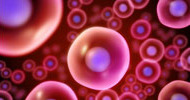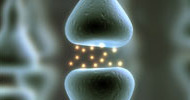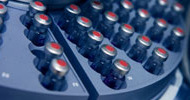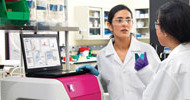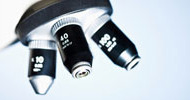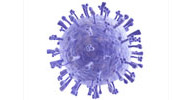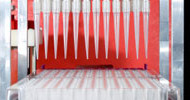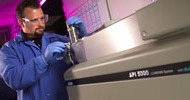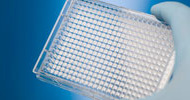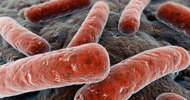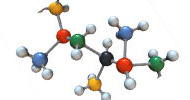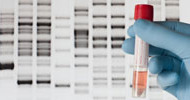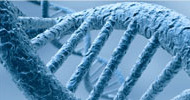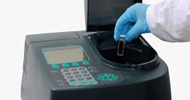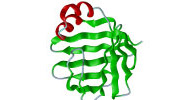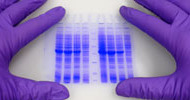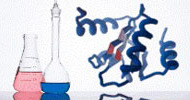Description
A robust platform for label-free biomolecular assaysBonn, Germany – 18 June 2013 – SAW Instruments, developer of the innovative sam® family of biosensors for real-time, label-free biomolecular interaction assays, is continuing to advance acoustic wave biosensor technology with the sam®X platform. Based on SAW’s Surface Acoustic Wave technology, the biosensors measure changes in mass and viscoelasticity at the chip surface based on changes in the high frequency acoustic oscillations running across the chip surface. This innovative approach is complementary to other biophysical techniques, such as SPR and QCM for measuring protein interactions, and can also be used for samples and applications that are difficult to analyse by these other methods, thus providing additional information and insights.
The sam®X platform is ideally suited to the study of native membrane proteins and protein complexes such as the 7TM G-Protein Coupled Receptors (GPCRs), either as membrane fragments or within liposome or vesicle particles. Such complexes can be very challenging to analyse by traditional biosensor platforms. For these therapeutically relevant targets, sam®X technology represents a new potential tool for drug discovery programs.
Closely coupled to this, many drug companies are also interested in looking at the separate conformational data from the sam®X platform (i.e. measuring the change in the acoustic wave amplitude) when using small molecule candidates against protein targets or vesicles. This can provide very valuable information on compounds whose binding induces structural changes in their targets.
In terms of practical workflow improvement and benefits, the eight channels of the dual-chip sam®X system provide more sensors for a higher throughput, and perhaps even more importantly, provide flexible fluidic channel routing which allows different samples or reagents to be delivered to discrete channels or combinations of channels on the chip. Different proteins can also be immobilized at separate sensor position while the chip is on-line, enabling loading of the surface to full capacity, and allowing for a degree of quantification, which vastly improves data quality and assists interpretation.














